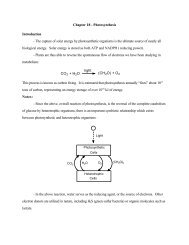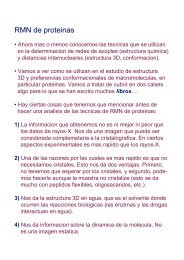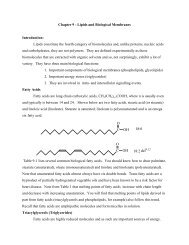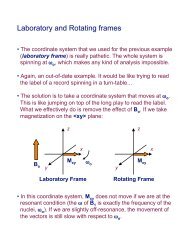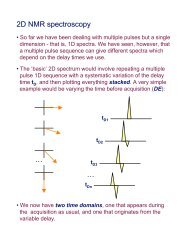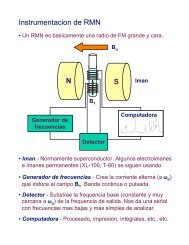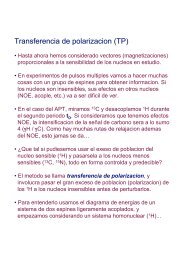Chapter16 - Glycolysis and Gluconeogenesis Topics you're not ...
Chapter16 - Glycolysis and Gluconeogenesis Topics you're not ...
Chapter16 - Glycolysis and Gluconeogenesis Topics you're not ...
You also want an ePaper? Increase the reach of your titles
YUMPU automatically turns print PDFs into web optimized ePapers that Google loves.
II. Individual reactions:GlucosekinasephosphataseGlucose 6-phosphateFructose 6-phosphatekinasephosphataseFructose 1,6-bisphosphateComment: In both cases, a (different) phosphatase cleaves a low-energy phosphate ester because tosynthesize an ATP via the exact reversal of the corresponding glycolytic reactions is energeticallyunfeasible.PEPOC OC OPO 3CH 2GDPPEP carboxykinaseGTPADPKinaseO OCC OOAAATPO OCCH 2CO OPyruvateCCH 3OCarboxylaseADPATP(biotin)Comment: To synthesize PEP from pyruvate requires the energy equivalent of 2 ATP <strong>and</strong> requires 2distinct steps, each of which requires an ATP (GTP in the second case). The carboxylase-catalyzedreaction is the anaplerotic reaction of the CAC. Thus, OAA is at an intersection involvinggluconeogenesis, the CAC, <strong>and</strong> also the glyoxalate cycle in plants. Since gluconeogenesis occurs in thecytoplasm whereas the CAC occurs in the mitochondria, <strong>and</strong> since the inner mitochondrial membrane isimpermeable to OAA, export of OAA intended for gluconeogenesis occurs via the malate shuttle:



